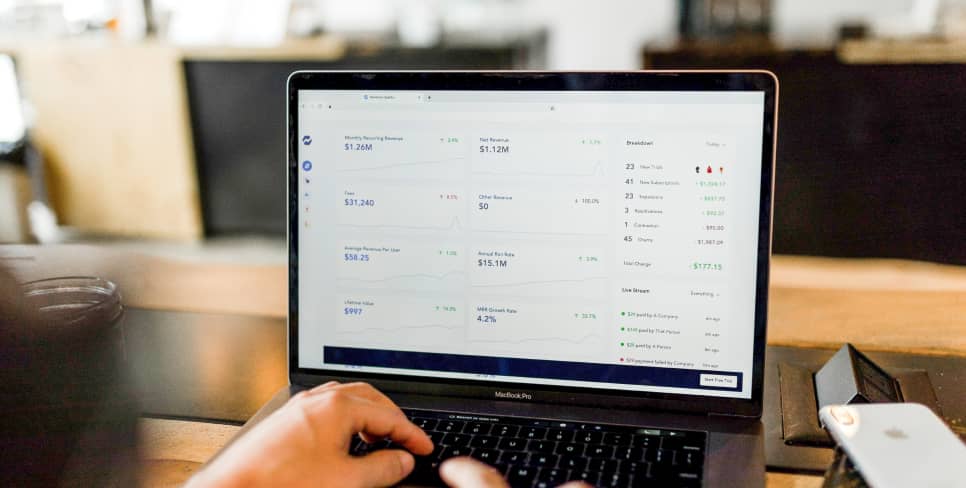Business Insights
Test, Measure & Tune

This is the final and most important section in the whole process of establishing a successful website. The Test, Measure & Tune phase is an ongoing process that should never end.
Every successful website that I have witnessed is the result of consistent ongoing improvement. You should look to make it part of your website culture.
If you want to develop a highly persuasive website then you must commit yourself to a system of consistent ongoing improvement and in order to do this successfully in your company, then you will need to be following a ‘Test, Measure and Tune’ (TMT) process.
A website is comparable to just about any business. If you set up a new company it is impossible (even for the most experienced professional) to establish any organisation that runs perfectly from day one. Good businesses become great only through consistent ongoing improvements. A website is no different. It is impossible to get a website perfect from day one (no matter how good you are). A fantastic website only becomes so through careful TMT!
Importance of testing
Every successful website that I have witnessed is the result of consistent ongoing improvement. You should look to make it part of your website culture.
If you want to develop a highly persuasive website then you must commit yourself to a system of consistent ongoing improvement and in order to do this successfully in your company, then you will need to be following a ‘Test, Measure and Tune’ (TMT) process.
A website is comparable to just about any business. If you set up a new company it is impossible (even for the most experienced professional) to establish any organisation that runs perfectly from day one. Good businesses become great only through consistent ongoing improvements. A website is no different. It is impossible to get a website perfect from day one (no matter how good you are). A fantastic website only becomes so through careful TMT
Choosing a success metric
In order to TMT your website it is imperative to have a measurable ‘success metric’ or ‘signal’; an objective measure that you can use to know whether you’ve made something better or worse.
The success metric that you will use depends on what area of your website you are specifically wanting to TMT. A list of common success metrics are outlined below.
- Visits
The Visits is the number of visits that have occurred to your website (or an individual page) over a certain period of time. Visits are often further broken down into visits from New Visitors and Returning Visitors. Visits are one of the most common and popular success metrics used by web marketers – especially when measuring the effectiveness of a promotional campaign. The more visits generated by the campaign the more effective it is considered to have been. However, visits often need to be combined with the next success metric – Conversion Rate, to truly determine the overall effectiveness of the promotional campaign. Some campaigns can generate large numbers of visitors but very few actual results as the campaign is targeting the wrong target of people or put another way – the visits are of low quality.
- Conversion Rate (CR)

The conversion rate is the most popular and common of all success metrics. It is calculated by dividing the number of conversions by the number of unique visits and multiplying the result by 100. This s a great way of measuring the persuasiveness (or effectiveness) of a single web page (usually on the conversion pathway), or even an entire website.
It is very important when calculating this that you understand what constitutes a ‘conversion’ – which depends on what you are currently trying measure. If it is the conversion of the entire website then your conversion will be your macro-conversion objective. For some websites that might be an order, a visitor submitting an enquiry form, registering for a free tool or signing up to the company e-zine. For others it could be the number of visitors clicking on the ‘Contact Us’ page to locate the contact details for a company.
However, if you are doing in-depth TMT you most likely will be trying to measure the conversion at a page level (or micro-action level) – i.e. you will want to measure what percentages of your visitors respond to individual calls to action. Your micro-action might be ‘Add Product to Cart’, ‘Click here to find out more’ and any number of other things.
- Click Through Rate (CTR)
The CTR success metric is usually associated with online advertising. It is used to measure both the effectives of your online promotions (pay-per-click ads, banner advertisements, text ads, directory listings, email promotions and so on) and the effectiveness of any promotions placed on your site by other advertisers. The CTR is calculated by dividing the total clicks on an item by the total visits to the page(s) that the promotion features on and multiplying the result by 100.
- Page Views Per Visit
This is often used to test the effectiveness of your website content. It outlines how many pages an average visitor views before leaving your website. It is often a good measure of the effectiveness of your pre-sales content and the overall value of your website to your visitors. The Page Views Per Visit success metric is calculated by dividing the total number of page views by the total number of visits.
- Revenue Per Visitor (RPV)
The RPV is used by e-commerce websites to measure how effective the website is at getting orders from its visitors. The higher the RPV the more effective the site is at generating revenue. The RPV is calculated by dividing the total revenue by the total number of visitors.
The conversion rate is often the easiest and best success metric to use within your TMT cycles. But, depending on what you are trying to achieve, other success metrics are sometimes more appropriate. It is important that you choose the right success metric for the job.
Understanding noise & latency

When planning your TMT cycles it is important to understand the concepts of ‘noise’ and ‘latency’ and the impact that they can have on your TMT cycles. If you do not understand noise and latency you can end up coming to the wrong conclusions and making the wrong decisions because you have misinterpreted your results.
What is Noise?
Noise means any outside factors that can have an impact or skew the results of your test. If you are not careful noise can cause the results of your test to be incorrect, which in turn will result in you making incorrect decisions.
- Examples of noise which might impact the results of your test are below.
- Natural disasters (Volcano erupting, big storm etc)
- Commercial noise (Interest rate rise, stock market crash etc)
- Promotional noise (major changes in the promotion of your website)
- Publicity / Media noise (articles in magazines or newspapers about your industry or organisation)
- Competitive noise (competitor does something drastic or unusual in their webmarketing)
- Seasonal noise (Christmas, Easter, Mothers Day etc)
- Day of Week Noise (different results on different days)
What is Latency?

On many occasions visitors will not immediately respond to your offers. Sometimes they will take days, weeks or even months to respond to your offers. This is called latency. Even the most compelling, low-risk offers have a degree of latency. High ticket offers and complex offers will often have very high latency.
If you are not aware of the latency associated with your test you can end up with the wrong result and in turn make a wrong decision. Once you have stopped your test you will need to continue measuring your results for a period of time.
Understanding the control
With any TMT cycle you need to have a ‘control’, i.e. what is the current best version, and it is what you want to measure against. Your control sets the standard.
Before you set up a test you want to know exactly what results your control produces. You also should know the ‘latency’ associated with your control.
Planning your recipes
Once you know your success metric (‘signal’) and your control, you are ready to set up your recipes. These are the variations to the control that you want to test. You need to carefully plan your recipes before you start your TMT cycle.
There are an almost unlimited number of things that you can TMT but I would recommend that initially you focus on these elements in your recipes:
- Headlines
- Opening Hooks
- Pictures / Hero Shots
- Trust Building Elements
- Pre-Sales Copy
- Teasers and Short Copy
- Bulleted Lists of Benefits or Features
- Calls To Action
- Pricing / Your Offers
- Order Forms / Check-Outs
- Length of Forms
- Button & Link Messaging
- Cross Sells & Up Sells
- The P.S

In addition to testing the different elements outlined above it is often a good idea to test ‘element attributes’. What I mean by this is: the element might be the headline. But some element attributes might be font size, font colour and so on. Examples of common element attributes are as follows.
- Size
- Alignment
- Style
- Colour
- Background Colour
- Position
- Bold / Italics / Underline
How to test

There are a number of different ways that you can conduct a TMT cycle. Before we look at this though - a very common and valid question is: how long do I need to run my test before I can trust the results? Or how many visitors do I need to have to each different recipe before I can trust the result of the test?
This is very difficult question to answer as it depends on the noise and the difference in the results between the control and the recipe. Good testing software will tell you the ‘Confidence Level’ that your test has achieved (i.e. 60%, 90%, 95%, 99% etc). However if you don’t have sophisticated testing software, as a general rule of thumb, I like to run my tests on a minimum of 500-1000 high quality visitors (quality prospects – not random clickers etc) before trusting the results.
Let’s take a look at the different ways to conduct a TMT cycle.
- Basic Testing
Run the control – run the recipe. This sort of testing is very susceptible to the effects of noise. Be very careful and think through any outside noise that may impact the results of the test. And make sure you run large sample sizes to keep the confidence level of your tests nice and high.
- Split Testing
Split testing allows you to run the control and the recipe(s) at the same time with the traffic split between the two. This helps you minimise the impact of any noise. Split testing requires specialised software, but as long as you have it the software is simple to use. If you are new to testing, split testing is a good place to start because it is easier to get solid scientific data, gain some testing experience and avoid many of the common pitfalls.
- Multivariate Testing
Multivariate testing allows you to test many different variables at the same time using sophisticated statistical analysis. Multivariate testing allows you to optimise a page as quick as possible but it requires powerful software, careful planning and it is complex to set up a successful TMT cycle.
Explore More Topics

Elevate Your Online Presence with Zeald, Your Premier Google Partner
Discover the power of partnership! This esteemed status places us in the top 3% of Google’s trusted collaborators globally, a testament to our expertise in digital marketing. ensuring your campaigns are not just managed, but optimised for exceptional performance.

